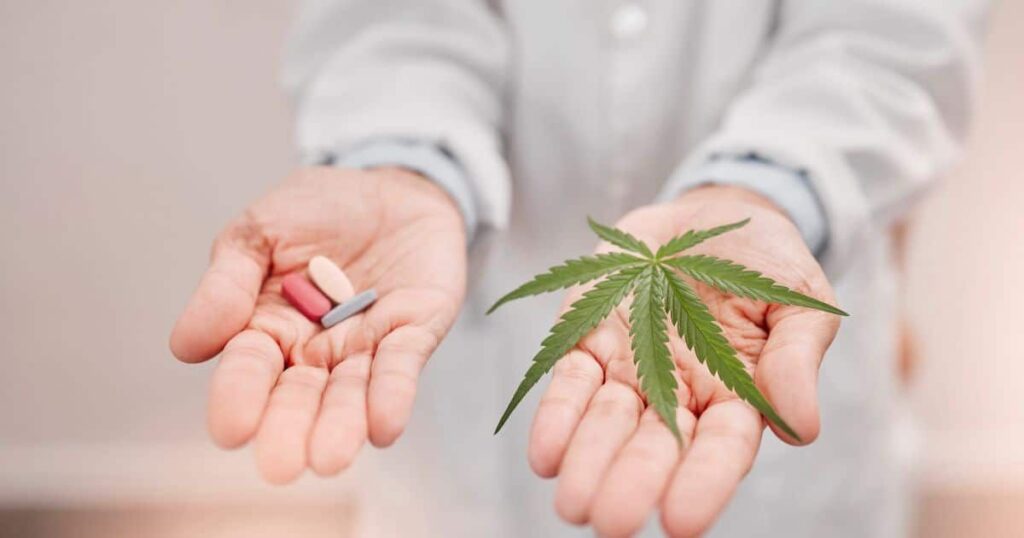The legalization of medical marijuana has emerged as a huge development in the fight against the opioid crisis, a public health issue that claims tens of thousands of lives in the U.S. annually. While medical marijuana has long been championed as a safer alternative for pain management, its legalization is beginning to be seen across the pharmaceutical ecosystem. One key result is the significant decrease in payments made by opioid manufacturers to physicians.
New research shows how medical marijuana legalization is reshaping the relationship between opioid manufacturers, physicians, and strategies in pain management. Let’s take a look at these recent findings, breaking down how medical marijuana is not just changing medical practice but also redefining the financial dynamics within the healthcare industry.
The Link Between Opioids, Physicians, and Payments
Before taking a look at the study, it’s important to understand the whole picture. Opioids have long been a common prescription drug for managing pain, but their overuse has resulted in widespread addiction and rising mortality rates. Between 2010 and 2020, opioid overdose deaths in the U.S. skyrocketed from 21,088 to 68,630, according to data from the National Institute on Drug Abuse (NIDA).
Opioid manufacturers rely on financial incentives, such as consulting fees, travel reimbursements, and speaking engagements, to interact with physicians and foster the familiarity with their products. While these payments can sometimes enable meaningful collaboration for the benefit of patients, they’ve also been criticized for biasing medical decisions and contributing to increased healthcare costs.
Enter medical marijuana. A safer, natural alternative for pain relief, marijuana offers less risk of addiction or overdose. Many states are now legalizing it for medical use, positioning cannabis as a competitor to opioids for pain management. The unfolding question remains, how does this competition affect the pharmaceutical industry?
Recent Study of Medical Marijuana
A recent study, published in the Journal of the American Statistical Association, provides compelling evidence that the introduction of medical marijuana significantly impacts the financial relationships between opioid manufacturers and pain physicians. The researchers—Dr. Wreetabrata Kar of the University at Buffalo School of Management, alongside scholars from the University of Florida and the University of Southern California—used a penalized synthetic control method to evaluate data from 2014 to 2017.
“The availability of new pain management options can change the financial dynamics between drug companies and health care providers,” says study co-author Wreetabrata Kar, PhD, assistant professor of marketing in the UB School of Management. “Our findings indicate that medical marijuana is increasingly viewed as a substitute for opioids in chronic pain treatment, with the potential to transform pain management practices and help mitigate the opioid crisis that has profoundly affected communities across the U.S.”
Their findings highlight a noticeable reduction in payments from opioid manufacturers to physicians prescribing opioids in states where medical marijuana became legal. This decrease proves the growing viability of marijuana as an alternative to opioid-based treatments for pain management.
Key Findings
- Overall Decline in Payments: After MML passed in specific states, direct payments from opioid manufacturers to physicians specializing in pain medicine saw a significant reduction.
- Specialist Impact: The reductions were most pronounced among pain specialists, suggesting that marijuana legalization is enabling some physicians to shift away from opioid prescriptions.
- Demographic Variations: The impact of medical marijuana legalization varied by region. Payments declined most in areas with lower income levels, higher Black populations, and younger demographics. This trend points to the nuanced factors that influence the adoption of marijuana over opioids among different communities.
Why Medical Marijuana is Disrupting Opioid Prescriptions
Safety and Addiction Concerns
Opioids are highly effective but carry a dangerous potential for addiction and overdose. Marijuana, by contrast, is widely perceived as a safer alternative, particularly for chronic pain management. While the FDA has yet to endorse cannabis as an official treatment, its increasing availability appears to be encouraging patients and physicians to seek alternatives.
Legislative Support
State-level legalization of medical marijuana provides a legal framework for its use, giving physicians more confidence to recommend it. With marijuana as a legal competitor, opioid manufacturers are finding it less necessary—or effective—to invest in financial incentives for physicians.
Changing Patient Demographics
Physicians practicing in lower-income regions and communities with younger populations saw the most significant shifts in payment reductions. Chronic pain and opioid misuse often impact these areas disproportionately, making them ideal for exploring alternatives like medical marijuana.
What This Means for the Healthcare Landscape
A Shift in Pain Management Practices
The adoption of medical marijuana is already encouraging a decline in opioid use. Prescription data included in the study showed that in states with medical marijuana, the ratio of 30-day opioid prescriptions relative to non-opioid treatments decreased from 1.57-to-1 in 2015 to 1.52-to-1 in 2017. This subtle but meaningful shift highlights the growing impact of medical marijuana on prescribing practices.
Financial Dynamics in Pharma
The decline in payments from opioid manufacturers may indicate a bigger recalibration of pharmaceutical marketing strategies. With marijuana disrupting the pain management sector, opioid manufacturers may need to innovate further—whether through safer formulations or by reevaluating their outreach strategies to physicians.
Next Steps for Medical Marijuana Research and Policy
These findings show promising potential for medical marijuana to help address the opioid crisis, but more work remains. Future research should explore how marijuana’s role in pain management continues to evolve and its impact on patient outcomes.
The legalization of medical marijuana is more than just a policy change—it’s a paradigm shift in pain management. By disrupting the financial relationships between physicians and opioid manufacturers, marijuana is paving the way for a safer approach to managing pain and, in the process, helping to mitigate the devastating impacts of the opioid crisis.
At the end of the day, addressing the opioid crisis in the U.S. with cannabis offers a viable path forward, but the immense financial power and influence of big pharmaceutical companies have made it challenging to break through. Despite the hurdles, the evidence speaks for itself—cannabis is a safer and less addictive alternative to opioids for pain management. This shift will require confronting entrenched interests and amplifying the growing body of research and patient experiences that point to cannabis as an effective and life-saving option in combating the opioid epidemic.

















